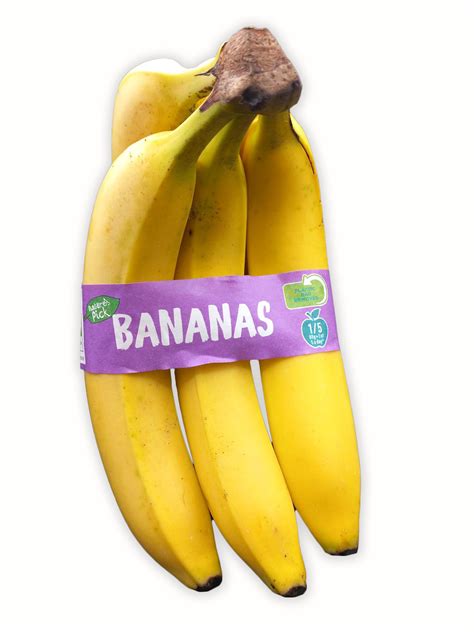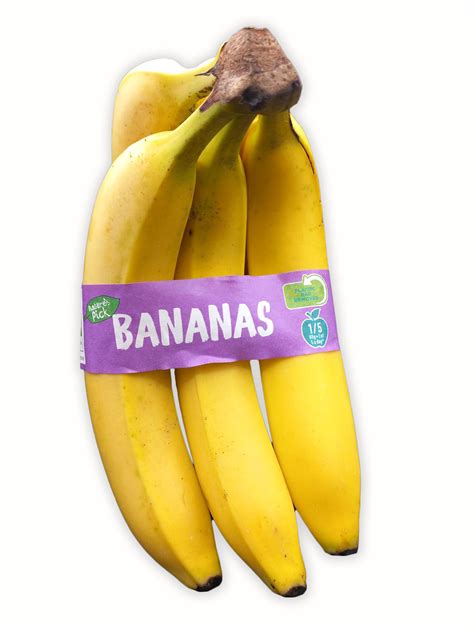
Banana sales at Aldi are reportedly down, prompting speculation that inflation is causing shoppers to cut back on even this traditionally budget-friendly fruit. While bananas have long been a staple for cost-conscious consumers, recent discussions online suggest that rising prices, even incrementally, are impacting purchasing decisions at the popular discount grocery chain.
Aldi Shoppers Skip Bananas: Is Inflation the Peel Problem?
The humble banana, often a loss leader for grocery stores and a go-to snack for budget-conscious consumers, appears to be facing an unexpected challenge: declining sales at Aldi. A recent online discussion has ignited speculation that even the slight increase in banana prices due to overall inflation is enough to deter shoppers at the popular discount retailer.
For years, bananas have been a staple in American households, prized for their affordability, nutritional value, and convenience. Aldi, known for its rock-bottom prices and no-frills shopping experience, has traditionally been a prime destination for banana buyers. However, anecdotal evidence suggests that consumers are now thinking twice before adding the yellow fruit to their carts.
One Reddit thread, the source of much of the current discussion, highlights the shift in consumer behavior. Users reported noticing fewer bananas in shoppers’ baskets and even admitted to personally scaling back their banana purchases due to perceived price increases. While the exact price increase may vary by location, the sentiment remains consistent: even small price hikes are impacting purchasing decisions, especially among budget-conscious shoppers.
“I’ve noticed a lot less bananas in people’s carts lately,” one Reddit user wrote, sparking the debate. Others chimed in, sharing their own experiences and observations about the changing banana landscape at Aldi.
The question then becomes: are bananas becoming a luxury item? While that might be an overstatement, the situation does underscore the pervasive impact of inflation on consumer behavior. Even products considered essential or traditionally inexpensive are not immune to the pressures of rising costs.
Experts suggest that several factors could be contributing to the decline in banana sales at Aldi. First and foremost, is the rising cost of goods and services across the board. Inflation, which has been a persistent concern in recent months, has impacted every stage of the supply chain, from production and transportation to packaging and retail. These increased costs are inevitably passed on to consumers, resulting in higher prices at the checkout.
Secondly, consumers are becoming more discerning about their spending habits. With inflation eroding purchasing power, shoppers are forced to prioritize their needs and make difficult choices about what to buy. Even small price increases can lead consumers to seek alternatives or simply reduce their overall consumption.
Thirdly, the perception of value plays a crucial role. While bananas remain relatively inexpensive compared to other fruits and snacks, the psychological impact of a price increase cannot be ignored. Consumers who are accustomed to paying a certain price for bananas may balk at even a slight increase, perceiving it as a sign of broader economic challenges.
Aldi has built its reputation on offering consistently low prices, attracting a loyal customer base of budget-conscious shoppers. The decline in banana sales raises questions about the retailer’s ability to maintain its competitive edge in an inflationary environment. While Aldi may not be able to completely shield consumers from rising prices, it can explore strategies to mitigate the impact and retain customer loyalty.
One option is to focus on efficiency and cost control throughout its supply chain. By streamlining operations and negotiating favorable terms with suppliers, Aldi may be able to minimize price increases and keep bananas affordable for its customers.
Another strategy is to emphasize the value proposition of bananas. Highlighting the nutritional benefits, versatility, and convenience of bananas can help consumers justify the purchase, even at slightly higher prices.
Furthermore, Aldi could consider offering promotions or discounts on bananas to incentivize sales. Temporary price reductions or bundled offers can attract shoppers and encourage them to add bananas to their carts.
The banana conundrum at Aldi serves as a microcosm of the broader economic challenges facing consumers and retailers alike. As inflation continues to impact purchasing power, both must adapt to the changing landscape. Consumers must become more discerning about their spending habits, while retailers must find innovative ways to maintain value and retain customer loyalty. The future of the humble banana, it seems, is intertwined with the fate of the economy.
The seemingly simple issue of banana sales at Aldi also opens a window into more complex dynamics of consumer psychology. Behavioral economics suggests that consumers often react more strongly to price increases than they do to equivalent price decreases. This phenomenon, known as loss aversion, means that the pain of paying more for bananas may outweigh the pleasure of consuming them.
Furthermore, the concept of reference pricing plays a role. Consumers often have a reference price in mind for a particular product, based on past experiences and expectations. When the actual price exceeds the reference price, consumers may feel a sense of disappointment or unfairness, leading them to reconsider their purchase.
The implications extend beyond Aldi and the banana market. This trend could signal a broader shift in consumer behavior, with shoppers becoming more price-sensitive and willing to forgo even traditionally affordable items. This could have significant consequences for the retail industry, forcing retailers to rethink their pricing strategies and value propositions.
Aldi’s business model is built around efficiency and low prices. This strategy has allowed them to gain a significant market share, particularly among price-conscious consumers. However, this model is being tested by the current inflationary environment. The need to balance maintaining low prices with the rising costs of goods presents a significant challenge.
If Aldi is unable to maintain its price advantage, it risks losing customers to competitors who are better able to absorb or offset price increases. This could lead to a decline in sales and market share, potentially impacting the company’s long-term profitability.
The banana situation at Aldi highlights the importance of supply chain management. Disruptions to the supply chain, whether due to weather events, transportation bottlenecks, or geopolitical instability, can lead to price increases and product shortages. Retailers need to have robust supply chain strategies in place to mitigate these risks and ensure a consistent supply of goods at affordable prices.
Moreover, retailers need to be transparent with consumers about the factors driving price increases. Explaining the challenges of the supply chain and the impact of inflation can help consumers understand and accept price adjustments. This transparency can build trust and maintain customer loyalty, even in a challenging economic environment.
The discussion surrounding banana sales at Aldi also raises broader questions about food affordability and accessibility. As food prices continue to rise, concerns about food insecurity are growing. Many families are struggling to afford nutritious foods, leading to health problems and social inequalities.
Governments and organizations need to address these issues through policies and programs that support food affordability and accessibility. This includes measures to increase food production, reduce food waste, and provide assistance to low-income families.
The banana situation at Aldi serves as a reminder that even seemingly insignificant consumer choices can have broader economic and social implications. By understanding the factors driving these choices, we can gain insights into the challenges facing consumers and retailers alike and work towards creating a more sustainable and equitable food system.
The availability of substitutes also plays a role in the decline of banana sales. Consumers may be opting for other fruits or snacks that they perceive as being better value for money. For example, seasonal fruits that are locally sourced may be more affordable during certain times of the year.
Retailers can respond to this by diversifying their product offerings and providing consumers with a wider range of affordable options. This can help them retain customers who are looking for alternatives to bananas.
Furthermore, the packaging and presentation of bananas can influence purchasing decisions. Consumers may be more likely to buy bananas that are attractively displayed and conveniently packaged. Retailers can invest in better packaging and display techniques to enhance the appeal of bananas and encourage sales.
The quality of bananas is also a factor. Consumers may be less likely to buy bananas that are bruised, overripe, or of poor quality. Retailers need to ensure that they are sourcing high-quality bananas and handling them properly to maintain their freshness and appearance.
The rise of online grocery shopping has also impacted banana sales. Consumers who shop online may be less likely to impulse buy bananas, as they are more focused on purchasing specific items on their shopping list. Retailers need to adapt to this trend by optimizing their online platforms and making it easy for consumers to add bananas to their virtual carts.
Moreover, retailers can use data analytics to better understand consumer preferences and tailor their marketing efforts accordingly. By analyzing sales data and customer feedback, they can identify trends and opportunities to improve their banana offerings and boost sales.
The health benefits of bananas are also a selling point. Highlighting the nutritional value of bananas, such as their high potassium content and fiber content, can encourage consumers to purchase them. Retailers can provide information about the health benefits of bananas through in-store signage, online articles, and social media posts.
The versatility of bananas is another advantage. Bananas can be eaten as a snack, added to smoothies, baked into bread, or used as an ingredient in other recipes. Retailers can provide recipe ideas and serving suggestions to inspire consumers and encourage them to incorporate bananas into their diets.
The environmental impact of banana production is also a concern for some consumers. Bananas are often grown in developing countries and transported long distances, which can contribute to carbon emissions. Retailers can address these concerns by sourcing bananas from sustainable farms and using eco-friendly packaging.
The ethical sourcing of bananas is also important. Consumers may be more likely to buy bananas that are certified as being ethically sourced, ensuring that workers are treated fairly and that the environment is protected. Retailers can partner with organizations that promote ethical sourcing and provide consumers with information about the origins of their bananas.
The cultural significance of bananas is also a factor. In some cultures, bananas are considered a symbol of good luck or prosperity. Retailers can tap into these cultural associations by incorporating bananas into their marketing campaigns and store displays.
The seasonal availability of bananas is relatively consistent throughout the year, but there may be fluctuations in price and quality depending on the growing season and weather conditions in producing regions. Retailers need to monitor these fluctuations and adjust their pricing and sourcing strategies accordingly.
The competition among banana producers and retailers is also intense. Retailers need to differentiate themselves from their competitors by offering high-quality bananas at competitive prices and providing excellent customer service.
The regulatory environment can also impact banana sales. Governments may impose tariffs or quotas on banana imports, which can affect the price and availability of bananas in the market. Retailers need to stay informed about these regulations and comply with all applicable laws.
The consumer perception of the value of bananas is constantly evolving. Retailers need to continuously monitor consumer attitudes and preferences and adapt their strategies accordingly. This requires ongoing market research, customer feedback, and data analysis.
The banana market is a complex and dynamic ecosystem, influenced by a wide range of factors. Retailers who are able to understand these factors and adapt their strategies accordingly will be best positioned to succeed in the long run. The humble banana, it seems, is a lot more complicated than it looks.
In-Depth Analysis:
The Reddit thread cited in the original article serves as a valuable, albeit anecdotal, data point. While not a scientifically rigorous survey, it reflects a sentiment resonating with a segment of Aldi’s customer base. The comments within the thread reveal a heightened awareness of price changes, even for inexpensive items like bananas. This suggests that consumers are meticulously tracking their grocery spending and making conscious decisions to cut back where possible.
The psychology behind this behavior is rooted in the concept of perceived value. When a product’s price remains stable for an extended period, consumers develop a strong sense of its “fair” price. Even a slight increase can trigger a negative reaction, leading them to question the overall value proposition.
Aldi’s success hinges on its ability to offer consistently low prices across its product range. The erosion of this price advantage, even in a small way, can have a disproportionate impact on consumer behavior. Customers who are drawn to Aldi specifically for its affordability may be more sensitive to price increases than shoppers at other grocery stores.
The decline in banana sales could also be attributed to a phenomenon known as “trading down.” As inflation squeezes household budgets, consumers may opt for cheaper alternatives, even within the same product category. For example, they might switch from organic bananas to conventional bananas, or choose other fruits that are currently on sale.
Furthermore, the visual impact of empty spaces on store shelves can influence consumer perception. If shoppers notice fewer bananas in people’s carts, they may subconsciously assume that bananas are becoming more expensive or less desirable. This can create a self-fulfilling prophecy, leading to further declines in sales.
Aldi’s response to this challenge will be crucial. The retailer has several options at its disposal, including:
- Price Optimization: Aldi could explore ways to minimize price increases by negotiating better deals with suppliers or streamlining its supply chain. Even small price reductions can make a significant difference in consumer perception.
- Value Messaging: Aldi could emphasize the nutritional benefits and versatility of bananas in its marketing materials. Highlighting the value proposition of bananas can help consumers justify the purchase, even at slightly higher prices.
- Promotional Offers: Aldi could offer temporary discounts or bundled deals on bananas to incentivize sales. These promotions can attract shoppers and encourage them to add bananas to their carts.
- Private Label Branding: Aldi could strengthen its private label banana offerings, emphasizing quality and affordability. Private label brands often offer better value than national brands, which can appeal to budget-conscious consumers.
- Transparency: Aldi could be transparent with customers about the factors driving price increases. Explaining the challenges of the supply chain and the impact of inflation can build trust and maintain customer loyalty.
The banana situation at Aldi serves as a valuable lesson for other retailers as well. In an inflationary environment, it is essential to:
- Monitor Consumer Sentiment: Track consumer attitudes and preferences through surveys, social media monitoring, and sales data analysis.
- Manage Price Expectations: Communicate price changes clearly and transparently to avoid surprising or alienating customers.
- Offer Value Alternatives: Provide a range of affordable options to cater to different budgets.
- Emphasize Value Proposition: Highlight the benefits and features of products to justify their price.
- Build Customer Loyalty: Invest in customer service and loyalty programs to retain customers during challenging times.
The future of banana sales at Aldi, and the broader retail landscape, will depend on the ability of retailers and consumers to adapt to the changing economic environment. By understanding the factors driving consumer behavior and implementing effective strategies, both can navigate the challenges of inflation and maintain a sustainable balance between affordability and value. The banana, a seemingly simple fruit, has become a symbol of these complex economic forces.
Background Information:
Aldi, a German-based discount supermarket chain, has experienced significant growth in the United States in recent years. Its business model is based on offering a limited selection of products, primarily private label brands, at significantly lower prices than traditional supermarkets. Aldi achieves these low prices through a variety of strategies, including:
- Streamlined Operations: Aldi operates with a lean staff and a no-frills store environment, minimizing overhead costs.
- Private Label Focus: Aldi relies heavily on its own private label brands, which are often sourced directly from manufacturers, eliminating the need for middlemen.
- Limited Product Selection: Aldi offers a smaller selection of products compared to traditional supermarkets, which allows it to negotiate better deals with suppliers.
- Efficient Supply Chain: Aldi has a highly efficient supply chain, which minimizes transportation and storage costs.
- No Frills Store Design: Aldi stores are designed to be simple and functional, with minimal décor and amenities.
Aldi’s success has been driven by the growing demand for affordable groceries, particularly among budget-conscious consumers. The chain has also benefited from the increasing popularity of private label brands, which are often perceived as being of equal or better quality than national brands.
Inflation has emerged as a major challenge for Aldi and other retailers in recent months. Rising costs of goods and services have forced retailers to increase prices, which can deter consumers who are looking for the best deals.
The Consumer Price Index (CPI), a measure of the average change over time in the prices paid by urban consumers for a market basket of consumer goods and services, has been rising steadily. This indicates that inflation is impacting a wide range of products and services, including groceries.
The banana market is a global industry, with bananas being grown in tropical regions around the world and exported to developed countries. The price of bananas is influenced by a variety of factors, including:
- Weather Conditions: Weather events such as hurricanes and droughts can disrupt banana production and lead to price increases.
- Transportation Costs: The cost of transporting bananas from producing regions to consuming markets can significantly impact the final price.
- Exchange Rates: Fluctuations in exchange rates can affect the price of imported bananas.
- Supply and Demand: The balance between supply and demand determines the price of bananas in the market.
- Pest and Diseases: Pests and diseases can damage banana crops and reduce yields, leading to price increases.
The banana market is also subject to political and economic factors, such as trade agreements and government regulations. These factors can influence the price and availability of bananas in different markets.
Expanded Context:
The decline in banana sales at Aldi is not an isolated incident. It is part of a broader trend of changing consumer behavior in response to inflation. Consumers are becoming more price-sensitive and are actively seeking ways to save money on groceries and other essential items.
This trend is reflected in a variety of ways, including:
- Increased Use of Coupons and Discounts: Consumers are increasingly using coupons and discounts to reduce their grocery bills.
- Switching to Cheaper Brands: Consumers are opting for cheaper brands, including private label brands, to save money.
- Buying in Bulk: Consumers are buying in bulk to take advantage of lower unit prices.
- Reducing Food Waste: Consumers are making efforts to reduce food waste to save money and reduce their environmental impact.
- Eating Out Less Often: Consumers are eating out less often and cooking more meals at home to save money.
- Growing Their Own Food: Consumers are growing their own fruits, vegetables, and herbs to reduce their grocery bills and improve their access to fresh, healthy food.
These changes in consumer behavior are having a significant impact on the retail industry. Retailers are being forced to adapt to the new realities of the market by:
- Offering More Value: Retailers are focusing on offering more value to consumers by providing high-quality products at competitive prices.
- Improving Customer Service: Retailers are investing in customer service to build loyalty and retain customers.
- Expanding Private Label Offerings: Retailers are expanding their private label offerings to provide consumers with affordable alternatives to national brands.
- Optimizing Pricing Strategies: Retailers are optimizing their pricing strategies to attract and retain customers.
- Improving Supply Chain Efficiency: Retailers are improving their supply chain efficiency to reduce costs and minimize price increases.
- Investing in Technology: Retailers are investing in technology to improve their operations and enhance the customer experience.
The retail industry is undergoing a period of significant transformation, driven by changing consumer behavior and the increasing pressure of inflation. Retailers who are able to adapt to these changes and offer value to consumers will be best positioned to succeed in the long run. The humble banana, it seems, is a bellwether of these broader economic trends.
5 Frequently Asked Questions (FAQ):
Q1: Why are banana sales reportedly down at Aldi?
A1: The reported decline in banana sales at Aldi is primarily attributed to inflation. Even the slight increase in banana prices, due to overall rising costs, is deterring some shoppers at the discount retailer, who are becoming more price-sensitive. The Reddit thread also suggests consumers are noticing fewer bananas in carts and adjusting purchasing habits due to the changes.
Q2: How does inflation affect the price of bananas?
A2: Inflation impacts every stage of the banana supply chain, from production and transportation to packaging and retail. Increased costs in these areas are passed on to consumers, resulting in higher prices at the checkout. This can make even traditionally affordable items like bananas less attractive to budget-conscious shoppers.
Q3: What strategies can Aldi use to address the decline in banana sales?
A3: Aldi can employ several strategies, including focusing on efficiency and cost control throughout its supply chain to minimize price increases. The retailer can also emphasize the nutritional benefits and versatility of bananas to justify their purchase, consider offering promotions or discounts to incentivize sales, and be transparent with consumers about the reasons for any price adjustments.
Q4: Is the decline in banana sales a sign of a broader economic issue?
A4: Yes, the banana sales situation at Aldi can be seen as a microcosm of broader economic challenges. It reflects how inflation is impacting consumer behavior, with shoppers becoming more price-sensitive and willing to forgo even traditionally affordable items. This trend could have significant consequences for the retail industry.
Q5: What are some alternative solutions for consumers looking for affordable fruits?
A5: Consumers seeking affordable fruit options can consider seasonal, locally-sourced fruits, which may be more affordable during certain times of the year. Also, opting for fruits on sale or buying frozen fruits can be cost-effective alternatives. Consumers can also explore farmer’s markets for better deals or consider growing their own fruits and vegetables at home.









